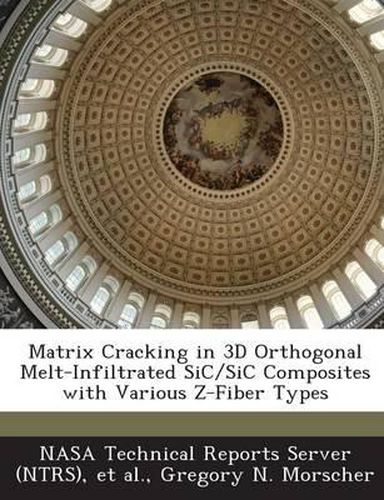The occurrence of matrix cracks in melt-infiltrated SiC/SiC composites with a 3D orthogonal architecture was determined at room temperature for specimens tested in tension oriented in the X-direction (parallel to Z-bundle weave direction) and Y-direction (perpendicular to Z-bundle weave direction) and Y-direction (perpendicular to Z-bundle weave direction). The fiber-types were Sylramic and Sylramic-IBN in the X and Y-directions and lower modulus ZMI, T300, and rayon in the Z-direction. Acoustic emission (AE) was used to monitor the matrix cracking activity. For Y-direction composites, the AE data was used to determine the exact (+/- 0.25 mm) location where matrix cracks occurred in the 3D orthogonal architecture. This enabled the determination of the stress-dependent matrix crack distributions for small but repeatable matrix rich ‘unidirectional’ and the matrix poor ‘cross-ply’ regions within the architecture. It was found that matrix cracking initiated at very low stresses (approx. 40 MPa) in the ‘unidirectional’ regions for the largest z-direction fiber tow composites. Decreasing the size of the z-fiber bundle, increased the stress for matrix cracking in the ‘unidirectional’ regions. Matrix cracking in the ‘cross-ply’ regions always occurred at higher stresses than in ‘unidirectional’ regions, and the stress-dependent matrix crack distribution of the ‘cross-ply’ regions was always over a wider stress-range than the ‘unidirectional’ regions. For composites tested in the X-direction, a lower elastic modulus and a narrower and lower stress-range for matrix cracking were observed compared to composites tested in the Y-direction.





